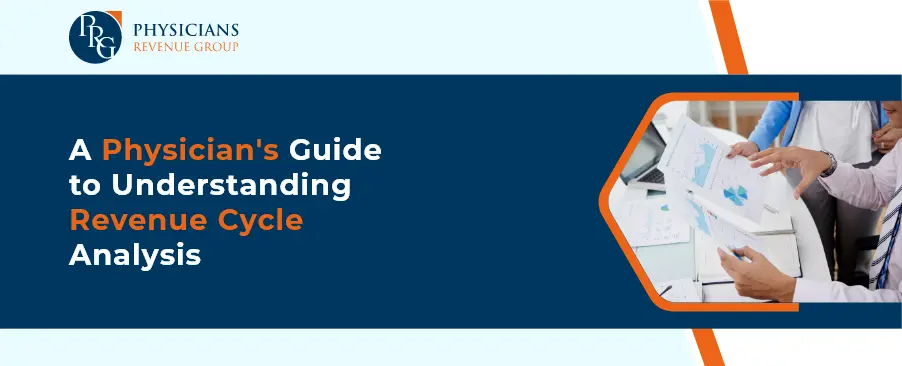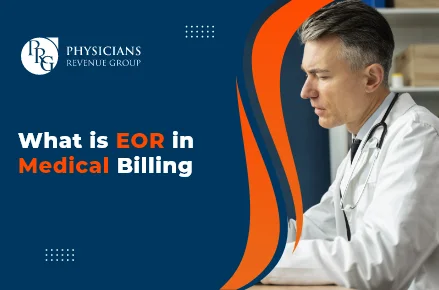
Email: info@prgmd.com | Call: +1 (630) 242-6474
Business hours: 9:00 to 5:00 | Monday to Friday
Email: info@prgmd.com | Call: +1 (630) 242-6474
Business hours: 9:00 to 5:00 | Monday to Friday

Table of Contents
ToggleWith constant evolution inside the healthcare industry, in addition to medical organizations always looking to innovate their processes, revenue cycle analysis has become a defining factor for growth. Revenue cycle management and its proper analysis offer a way to keep up with the constant changes while improving the processes where change is needed the most.
What’s most important is knowing how to identify and fix issues in the revenue cycle process – as it streamlines a medical organization’s workflow. Revenue cycle analysis can be outsourced to a third-party RCM-billing company – targeting to help struggling organizations get the maximum benefits out of their current clinical and administrative functions. Such organizations can include:
A revenue cycle analysis in healthcare can describe a thorough evaluation of all procedural steps to manage a healthcare practice’s financials. The revenue cycle includes all revenue-generating steps, from patient registrations to patient eligibility verification, claims submissions, and payment processing toward collections.
Before we go into the key concepts of revenue cycle analysis, let’s first discuss different types of revenue cycle analytics.
Firstly, there’s patient access, which marks the initial steps of scheduling and registering patients. The phase encompasses tasks like the value of eligibility verification in RCM, verifying insurance eligibility, collecting copayments and deductibles, and obtaining authorizations for medical procedures.
Charge capture is the process of tracking and billing patients for the services they receive. The step involves:
Moving forward, there’s billing, which is a common yet important step in the revenue cycle analysis. This involves the process of billing and coding for services given to patients. It encompasses tasks such as:
The accounts receivable management revolves around efficiently managing and collecting payments from patients and insurance payers. This step includes:
Lastly, performance reporting is a vital part of revenue cycle analysis. This involves analyzing and reporting key metrics, including days in accounts receivable, denial rates, and collection rates. Through this, valuable insights into the financial health of the healthcare organization are gained, aiding in identifying opportunities for improvement.
Understanding these key concepts is vital for healthcare professionals, doctors, and administrative staff involved in revenue cycle management. Collectively, these elements contribute to the practical analysis of the revenue cycle, ensuring the financial well-being of healthcare organizations.
The comparative analytics method involves assessing a healthcare organization’s revenue cycle performance compared to similar entities. By doing so, it becomes possible to pinpoint areas where the organization might be underperforming and uncover opportunities for improvement. Comparative analytics is a valuable tool for healthcare professionals to benchmark their performance against peers and strive for continuous improvement.
By incorporating these types of revenue cycle analytics, healthcare organizations can actively manage their revenue cycle—these analytics help identify issues and uncover opportunities for improvement. Potential problems can be addressed effectively through real-time analysis.
Furthermore, the integration of revenue cycle analysis facilitates healthcare professionals to make data-driven decisions, enhancing the overall financial health of their practices.
Improving the revenue cycle leads to a notable increase in patient service revenue for healthcare providers. This improvement is possible through:
All of these adjustments contribute to a healthier financial bottom line.
Comparative analytics offers a valuable overview for performance benchmarking, enabling organizations to assess their revenue cycle against similar organizations. This comparison highlights areas for improvement, influencing the beginning of initiatives to enhance overall performance. By utilizing comparative analytics, healthcare professionals can strategically steer their revenue cycle toward greater efficiency and effectiveness.
Incorporating revenue cycle analytics into healthcare practices yields many benefits. The impact is significant, from identifying and correcting revenue leakage to boosting operational efficiency and patient satisfaction. The cost reductions achieved through streamlined processes further contribute to a healthier financial bottom line. Additionally, strategic decision-making, risk management, and ensuring compliance are key aspects empowered by analytics. Furthermore, performance benchmarking is a guiding compass, steering healthcare professionals toward constant improvement and efficiency. Incorporating revenue cycle analytics is not just an option; it’s a strategic necessity for healthcare organizations seeking sustained financial health, operational excellence, and patient satisfaction.
Staying informed about changes in healthcare rules, coding requirements, and payment models is essential. Healthcare providers can adjust their processes to ensure compliance and better revenue performance. Staying current with industry changes is essential for the long-term success of the revenue cycle.
Incorporating these best practices into the revenue cycle analysis process empowers healthcare professionals to drive positive changes and enhance the financial health of their organizations.
Share:
Categories
Recently Added

What is an ABN in medical billing?

What does a Clearinghouse do During Claims Submission?

What is EOR in Medical Billing?
We Would Love to Assist You!
We treat your data confidentially and don’t share any information with a third party.